Before the deluge of 2017 rankings and predictions reaches shore, it's time to take one last look three years into college football's future.
The future power rankings are back for one final time this offseason. After examining the quarterbacks, the offenses and the defenses for the next three seasons, it's time to take a macro view and project the 25 best college football teams from 2017 through 2019. The team ranking has some similarities to the previous three but also some key differences. It is heavily personnel-based, as the current roster and recruiting performance -- particularly the 2017 class and what we know about the 2018 class -- are significant factors. The quarterback situations are critical, as teams with security for multiple years often got the nod over teams with questions.
Other elements like coaching, both influence and viability, are considered, along with a team's path to conference championships and, ultimately, the College Football Playoff.
We surveyed several Power 5 coaches and coordinators, as well as ESPN reporters, to put together the final list.
Previous FPR positions: 1 for offense, 1 for defense, 5 for quarterback
Scouting the Tide: Those who tracked previous future power rankings editions knew Nick Saban's team would lead off this one, too. Alabama topped both the offensive and defensive rankings this spring. The Tide dominate recruiting, especially along the line of scrimmage, and Saban, who last month signed a contract extension through the 2024 season, doesn't look to be going anywhere anytime soon. Most daunting for the other national title contenders is that Alabama's quarterback position, which produces solid but rarely exceptional players, could blossom under new offensive coordinator Brian Daboll. He inherits two promising young players in sophomore Jalen Hurts and incoming freshman Tua Tagovailoa, who should carry Alabama through the evaluation period. "[Daboll] is going to focus on the throw game," said a defensive coordinator who has faced Alabama in recent years. "Lane would take plays you got hurt on 2-3 weeks ago and put that in, or a gadget play you've never seen. Those plays would hit. But the development of players wasn't really there. What's scary about the guy coming in is he's going to develop players, and if they develop a quarterback there, that's not what you want."
Previous FPR positions: 5 for offense, 3 for defense, 4 for quarterback
Scouting the Buckeyes: There's a genuine curiosity about Ohio State after the playoff no-show against Clemson and its subsequent staff changes, namely the arrival of offensive coordinator Kevin Wilson. Some coaches wonder if Wilson and Urban Meyer will clash, and whether Meyer will give Wilson enough control over the offense. Quarterback J.T. Barrett returns for a fifth season, but there are also questions about him. "When it gets to be a bigger stage, he freezes," a Power 5 defensive coordinator said. "He hasn't passed the test of throwing the downfield pass when it needs to be done." Wilson will attack downfield, but coaches say he also doesn't constantly stress his linemen in pass protection, which should help the Buckeyes. Ohio State still has exceptional talent and one of the game's preeminent coaches in Meyer, who, at just 52, likely will remain throughout the evaluation period. The Buckeyes boast one of the nation's best defensive lines in 2017. They must rebuild the secondary but have the recruiting-coaching combination to deliver. "Ohio State's going to be really good on defense," a Power 5 coach said. "They've got a returning front that's real."
Previous FPR positions: 3 for offense, 4 for defense, 9 for quarterback
Scouting the Seminoles: The race between FSU and Clemson for the No. 3 spot is almost too close to call. Clemson emerges from the best two-year stretch in its history, and continues to excel with its unique recruiting approach. But this ranking is about the future, and Florida State gets the ever-so-slight nod here for two reasons: quarterback Deondre Francois and coach Jimbo Fisher. "Just projecting out three years from now, it's pretty even," an ACC coach said. "I would have to give Florida State the edge right now because they've got a quarterback back, and Clemson doesn't." A Power 5 defensive coordinator added that no coach is more adept at developing quarterbacks than Fisher, who could have Francois for multiple seasons (but little depth behind him). Florida State's defense, which regained some of its bite down the stretch last year, loses a great leader in DeMarcus Walker but gets one back in Derwin James. "They played a lot better at the end of the year," an ACC defensive assistant said. "The question is, was it level of competition -- they started playing worse teams -- or did they figure it out? Probably a bit of both. There's no reason to think they shouldn't be good." FSU remains a recruiting heavyweight, luring defensive lineman Marvin Wilson, ESPN's top player in the 2018 class, as well as offensive playmakers like Cam Akers and Khalan Laborn,who can help fill the loss of standout running back Dalvin Cook.
Previous FPR positions: 4 for offense, 2 for defense, 7 for quarterback
Scouting the Tigers: The Tigers won't be waiting another 35 years for their next national title. It could come in the next three seasons, especially if one of their prized quarterback recruits -- incoming freshman Hunter Johnson or 2018 commit Trevor Lawrence, ESPN's top-rated pocket passer in the class -- pans out. Clemson has become a recruiting behemoth under Dabo Swinney, and no longer only at positions like defensive line and wide receiver, which, by the way, continue to churn out stars (watch out for defensive end Clelin Ferrell and wideout Tee Higgins this year). "They seem to be bringing in guys at a pretty good rate," an ACC coach said. "The defensive line, it's pretty special." The only reservations about Clemson are how it fares without quarterback Deshaun Watson, the greatest player in team history, and whether its staff of young assistants -- Tony Elliott, Jeff Scott and Brandon Streeter -- can identify stars like former offensive coordinator Chad Morris did. Swinney is firmly entrenched at a program where he fits perfectly, and, barring a Saban retirement, should remain for many more years.
 5. USC Trojans
5. USC Trojans
Previous FPR positions: 2 for offense, 8 for defense, 2 for quarterback
Scouting the Trojans: It took two months for Sam Darnold to change the view of USC, both for the immediate and perhaps the long term. While Darnold could lead the Trojans' offense for only one more year, especially if he matches or exceeds last year's performance at quarterback, USC is finally stocked to compete annually for the Pac-12 title and a playoff spot. Under Clay Helton, USC has gone away from using excess scholarships on skill players and instead has fortified its lines on both sides. The Trojans' offensive line should rival Stanford's for best in the league during the evaluation period. There's tremendous depth at the offensive skill spots, most notably tight end, which will help whoever succeeds Darnold (Jack Sears and Matt Fink appear to be next in line). "They have some running backs and have some guys who redshirted who were good prospects, receiver-wise," a Pac-12 defensive coordinator said. The defense made strides late last season, especially at linebacker, which is loaded with non-seniors like Cameron Smith and Porter Gustin. Cornerback should remain an immediate strength with Iman Marshall, but USC needs some difference-makers to emerge along its front. "I don't know if it will ever be a lockdown unit," a Power 5 defensive coordinator said. "The league doesn't allow for it, but it's going to be an opportunistic, big-play defense." Helton boosted his stock late last season but still must show he can boost USC back into the national title race.
Previous FPR positions: 9 for offense, 9 for defense, 6 for quarterback
Scouting the Wolverines: Few teams' forecasts are tougher to peg than Michigan's, for several reasons. The Wolverines lose so much from the 2016 team -- outside linebacker Mike McCray is the only returning starter on defense -- and a slight backslide this fall would be understandable, if not expected. They should contend nationally in 2018, as excellent recruiting classes should blossom under Jim Harbaugh and a top coaching staff. Harbaugh undoubtedly has raised Michigan's profile, but his own future remains a point of debate. "They're a wild card, man," a Power 5 coach said. "Is he going to be there in three years? He typically hasn't stayed real long. Are the Indianapolis Colts going to pay Jim Harbaugh $10 million?" The quarterback outlook is promising, especially if Brandon Peters develops under Harbaugh. If there's any letup on defense, it will be for the short term. Coordinator Don Brown, who received a five-year contract after last season, is among the nation's best. "Michigan was an old team, and most people realize that," a Big Ten coordinator said. "We'll see what was behind those guys."
Previous FPR positions: 7 for offense, 16 for defense, 1 for quarterback
Scouting the Sooners: The first draft of these rankings came out before Bob Stoops announced his retirement as Sooners coach. Surprisingly, the change didn't prompt a major shakeup, as the immediate outlook, and perhaps the long-term outlook, looks great under new boss Lincoln Riley. Oklahoma topped the quarterback future power rankings list with Baker Mayfield back for 2017, followed by Kyler Murray and Austin Kendall for 2018 and 2019. Riley's familiarity with the quarterbacks and the rest of the offense should prevent any drop-off with the unit, and could increase production. There are bigger questions on defense, despite the late-season improvement in 2016. The Mike Stoops-led staff will remain this fall but could go through changes for 2018. OU's secondary should be a strength this season, but developing stars up front must be the long-term focus. "The conference is different, more wide open," a Big 12 offensive assistant said. "You would expect a little more consistency of them being dominant. They're dominant at times, but you would expect a little more consistency."
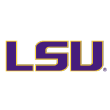 8. LSU Tigers
8. LSU Tigers
Previous FPR positions: Not ranked for offense, 5 for defense, not ranked for quarterback
Scouting the Tigers: After Alabama, the projections for SEC teams get tricky, in part because they all have to go through Saban and the Tide. Talent isn't the issue, certainly not at LSU, which brings loads of future pros to the stadium every Saturday. There are valid points on both sides of the LSU debate. "LSU does not have a quarterback," a Power 5 defensive coordinator said. That may be true, but the mere fact that new coaches are in charge of a grossly mismanaged position could yield better results. It doesn't hurt that running back Derrius Guice will be around for at least 2017. "Matt Canada does a really good job, and I think he'll find ways to score points," an ACC coach said of LSU's new offensive coordinator, who comes from the ACC. "With what he does offensively, he creates a lot of problems for the defense. He hasn't been scoring points necessarily with the quarterback." LSU's defense is young at spots but boasts a disruptive edge rusher in Arden Key and an elite coordinator in Dave Aranda. Ed Orgeron must re-prove himself as a head coach, but his recruiting prowess is undeniable. If he lets his coordinators do their jobs, LSU should rise in the next few years. "Their talent is incredible. He'll leave those guys alone to do their jobs and get out of the way, which Les never did," a Power 5 coach said. "Canada gives them a whole new element on offense."
Previous FPR positions: 7 for offense, 7 for defense, 8 for quarterback
Scouting the Huskies: Washington fast-tracked to the national stage in Chris Petersen's third season, and should stick around for a while. "They'll be the new Oregon, without the flash," said a Power 5 coach. "They just coach them so well. They're so unique." Record-setting quarterback Jake Browning, whom several coaches liken to a right-handed Kellen Moore, has two seasons of eligibility left, as does productive running back Myles Gaskin. Left tackle Trey Adams also is a junior, and while he likely will go pro after this season, Washington's offensive line forecast looks very promising. Petersen's offense might need to shoulder more of the short-term burden following several NFL departures on defense, although Washington remains strong at defensive tackle (Vita Vea, Greg Gaines) and inside linebacker (Azeem Victor, Keishawn Bierria). Although Petersen is a proven winner and talent developer, he and his staff must show they can keep pace on the recruiting trail with decent but not great local resources. "A lot of their top guys last year came from areas where the previous staff was really strong in recruiting," a Pac-12 coordinator said. "I just don't know how they'll sustain it. Browning being there, he's an awesome player." Safety Taylor Rapp has three years of eligibility left and will lead the secondary through a transition year before more depth emerges.
Previous FPR positions: 11 for offense, 11 for defense, 17 for quarterback
Scouting the Cardinal: We have reached the point on The Farm where a 10-win season can feel somewhat unsatisfying, as last year's did. Stanford has won 10 or more games in five of six seasons under David Shaw, who, despite steady NFL chatter, shows no desire to leave his alma mater and is only 44. The Cardinal don't sign enormous, splashy recruiting classes, but they continue to stockpile talent at certain positions, namely offensive line. Stanford's quarterback recruiting also stands out, a good thing after the position underperformed last year. Shaw has options under center -- Keller Chryst, Ryan Burns, K.J. Costello, incoming freshman Davis Mills -- but needs someone to emerge quickly for an offense that can no longer rely on Christian McCaffrey. "That kid's going to be really good," a Pac-12 coordinator said of Mills, "and they signed a couple young receivers who will be really good." There are similar short-term needs on defense, which looks strong in the back end, especially at cornerback, but loses a superstar lineman in Solomon Thomas. "Those two guys on film, I didn't think anybody else was even close to them," a Power 5 coach said of McCaffrey and Thomas. "The other guys were OK. I didn't think they were out of this world." After being bullied by Washington last year, Stanford has a new threat on its radar but should continue to compete for Pac-12 titles.
Previous FPR positions: 6 for offense, 12 for defense, 12 for quarterback
Scouting the Nittany Lions: The follow-up to last year's breakthrough season will be fascinating in Happy Valley. If Penn State repeats as Big Ten champion, which is certainly possible, it will change the Meyer-Harbaugh discussion that dominates Big Ten circles. But coaches and other observers think Penn State benefited from a season filled with good fortune and still must build up its line play. "They were the luckiest team I saw at times," a Power 5 coordinator said. "A lot of things could have gone the other way." There's urgency on offense as the Lions likely enter their final season with running back Saquon Barkley, considered the nation's best running back by coaches both inside and outside the league. Coordinator Joe Moorhead also could be moving on soon to a head-coaching position. But quarterback Trace McSorley has two years of eligibility left, and while Justin Fields' decommitment hurts, PSU should be fine through the evaluation period with McSorley and then Tommy Stevens, Jake Zembiec or incoming freshman Sean Clifford. "They're really good at wide receiver and the quarterback is what made it go [in 2016]," a Big Ten coach said. "He played out of his mind." The defense must develop more stars and fill some immediate gaps -- cornerback John Reid's injury stings in the short term -- but the recruiting outlook is good. "They had a much better season than anybody expected," a Big Ten coordinator said. "That will carry them recruiting-wise. They'll see that benefit, and the spike will happen now." Coach James Franklin gained tremendous security with last season's finish and seems highly unlikely to leave for another college job.
Previous FPR positions: Not ranked for offense, 13 for defense, not ranked for quarterback
Scouting the Badgers: The similarities with Stanford go beyond color scheme and style of play. Like Stanford, Wisconsin doesn't win signing day but wins plenty when it really counts. The Big Ten West Division isn't a gantlet, but Wisconsin has averaged 9.8 wins per season since 2004 despite four head coaches and plenty of staff fluctuation. "They change assistant coaches and coordinators like pants," a veteran Power 5 coordinator said. "But nothing changes. They keep winning." The best news for Wisconsin is that its staff might finally stabilize with alums at head coach (Paul Chryst) and both coordinator positions (Joe Rudolph, Jim Leonhard). The defense has dramatically improved the past three seasons, and while Leonhard lacks coaching experience, he brings plenty of knowledge to the group. Quarterback Alex Hornibrook showed poise as a redshirt freshman and could carry Wisconsin through the evaluation period. "He doesn't make many mistakes," a Big Ten coach said. Wisconsin still must develop more receivers but has great depth at tight end and could go with a committee of running backs, at least in the short term. Coaches see the offensive line returning to its standard levels under Rudolph (longtime line coach Bob Bostad also is back on staff, working with the linebackers).
Previous FPR positions: 10 for offense, not ranked for defense, 11 for quarterback
Scouting the Cowboys: Mike Gundy has molded Oklahoma State into the Big 12's version of Stanford and Wisconsin. The Pokes have averaged 9.6 wins since 2008 under Gundy, who just signed a five-year contract extension and should remain through the evaluation period. Coaches love quarterback Mason Rudolph, wide receiver James Washington and the rest of the 2017 offense, which projects as one of the nation's best. They also wonder what will happen after Rudolph moves on to the NFL. "If Mason Rudolph was a freshman or sophomore, I'd say they're going to be good for a while," a Big 12 coordinator said. While Gundy could sign his best recruiting class next year, the key will be getting enough from Rudolph's successor in 2018. The next quarterback should have enough around him with running back Justice Hill and possibly wideout Jalen McCleskey, just a junior. "The running back is a really good player and No. 1 [McCleskey], those guys jump out at you," a Big 12 coach said. Oklahoma State's defense isn't dominant but makes enough plays through its pressure and can close out high-scoring games. "Kind of bend don't break," a Big 12 offensive assistant said, "and once it gets on the line, they step up. [Coordinator] Glenn Spencer has done a good job there for a while."
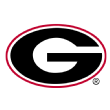 14. Georgia Bulldogs
14. Georgia Bulldogs
Previous FPR positions: 13 for offense, 14 for defense, 15 for quarterback
Scouting the Bulldogs: There's so much potential in Athens, but then again, there has been for years. Not surprisingly, Kirby Smart is capitalizing on Georgia's virtually unparalleled regional recruiting territory. He has a team capable of winning the SEC East this fall and possibly challenging for bigger prizes in 2018 and 2019. He has two promising quarterbacks in Jacob Eason and Jake Fromm. But there are lingering questions around Eason and Smart, both still early in their Georgia careers, as well as with areas like offensive line and wide receiver. "They recruited really well this last cycle, but the classes prior to that have been subpar," an SEC defensive coordinator said. "So how much do the freshmen play?" Another coordinator in the league added: "If they can get their offensive line on track with their skill people, the running backs and that QB, they'll be a force." Georgia's immediate outlook on defense looks strong with experience at all three levels and potential star power up front with Trenton Thompson. The secondary is solid but not spectacular, although another year under Smart could change things.
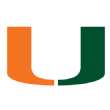 15. Miami Hurricanes
15. Miami Hurricanes
Previous FPR positions: 19 for offense, 15 for defense, not ranked for quarterback
Scouting the Hurricanes: Mark Richt has dramatically improved the trajectory of his alma mater after just one season, putting Miami in position to compete in the always wide-open ACC Coastal. "They've got a big-time chance," a Power 5 coordinator said. "And they ain't on the side of Clemson and Florida State." Added an ACC coach: "They're recruiting really well. They've got a top-5 class going right now." The 2018 class adds to an already talented young core, some of whom logged significant field time last season, especially on defense. Linebackers Shaq Quarterman and Michael Pinckney, and end Joe Jackson are among the players with multiple seasons of eligibility left who will work under coordinator Manny Diaz and an excellent staff. "They had to play younger guys, and that will be a great benefit to them," a Power 5 defensive coordinator said. "Manny was able to get a lot of his system in." Quarterback is a major short-term question, but Miami boasts playmakers with multiple seasons of eligibility left -- running back Mark Walton, wide receiver Ahmmon Richards -- and soon will bring in more.
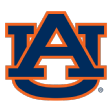 16. Auburn Tigers
16. Auburn Tigers
Previous FPR positions: 16 for offense, 6 for defense, 10 for quarterback
Scouting the Tigers: Here's another SEC wild-card projection, but in this case, it truly hinges on a player who has yet to play a down for the Tigers. Quarterback Jarrett Stidham, the transfer from Baylor, means that much to the future of Auburn under coach Gus Malzahn. Coaches love Stidham. "He is legit," an ACC coach said. "This could be his only year [at Auburn], because if he has a great year, he might go [pro]." Even if Stidham delivers one great season and bolts, it should put Auburn back with the SEC's best and take some of the heat off of Malzahn. Auburn is developing along the offensive line and boasts a strong running back tandem in juniors Kamryn Pettway and Kerryon Johnson. Auburn's defense made significant strides last year under Kevin Steele, and the outlook up front is excellent, in both the short term and long term. "They're big, they're physical, they can run, everything you want," said an offensive line coach who faced Auburn. "They're as talented as everybody." Auburn isn't higher because of the uncertainty around Malzahn, who needs to get his signature unit producing at a high rate again this season.
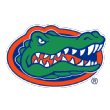 17. Florida Gators
17. Florida Gators
Previous FPR positions: 20 for offense, 10 for defense, not ranked for quarterback
Scouting the Gators: Florida fans won't like seeing Georgia, Miami and others ahead of their team, especially after consecutive SEC East titles. There's not much separating the Gators from a sunnier outlook, but they must address several areas on the current roster, namely quarterback, and make a bigger dent on the recruiting trail. Malik Zaire could be an effective bridge quarterback, although his style might not fit Jim McElwain's offense. Then again, if Feleipe Franks blossoms or Florida lands 2018 prospect Justin Fields, the quarterback cloud hanging over McElwain could vanish. Florida has depth at wide receiver and tight end but needs the offensive line to develop under new coach Brad Davis. "Offensively, they've got further to go than many of the other schools," an SEC defensive assistant said. "And I don't know if their defense is strong enough to where if the quarterback is better, I don't know if he can be that much better." The Gators remain very talented, if not overly experienced on defense, especially in the secondary. Coordinator Randy Shannon knows the personnel but must adapt his style, which coaches say is less aggressive than predecessor Geoff Collins', to the group.
 18. Texas Longhorns
18. Texas Longhorns
Previous FPR positions: 18 for offense, 18 for defense, 21 for quarterback
Scouting the Longhorns: It's going to get better in Austin. How much better and how quickly the improvement takes place are the great unknowns. Charlie Strong leaves Tom Herman with experienced pieces on both sides of the ball, as well as younger players from Strong's top-10 recruiting classes in 2015 and 2016. Texas also can rise faster in the Big 12 than other leagues. But Herman will have to adapt a bit, especially to quarterback Shane Buechele, who will guide the offense at least for the short term. "I don't think Buechele can do what Herman wants to do," a Power 5 coach said. "He isn't going to run the football like Herman wants to run the football." Several other coaches agreed, but, as a Big 12 assistant noted, "Tom Herman ain't a dummy. He's been a successful coach his whole career. He'll find a way to make it right." Quarterback depth is an area worth watching, but the bigger questions come on defense, which had historically poor performances under Strong. New coordinator Todd Orlando inherits a group with some talent up front and in the secondary, but must foster consistency in an offense-driven league. "They'll be improved just by scheme and being aggressive," said an offensive coordinator who faces Texas this season. "They'll be better." Added a Power 5 coach: "They're probably as talented as anybody. There was just something missing. Todd Orlando is as good as there is in the country, and they're very difficult to play against. They've got five stars lined up across that front."
Previous FPR positions: Not ranked for offense, 20 for defense, not ranked for quarterback
Scouting the Hokies: Justin Fuente needed one season to get Virginia Tech in the ACC championship game. He might need two more to create a true breakthrough after some surprise early NFL entries, but the Hokies are on the rise. Fuente and veteran defensive coordinator Bud Foster give Virginia Tech one of the best schematic tandems in college football. "You know they're always going to be solid on defense, and I think Fuente will do a good job offensively," an ACC coach said. "It's just whether or not he can get a quarterback in there to do what he needs to do." Quarterback is the big unknown for 2017, and the Hokies must find receivers to complement Cam Phillips. After loading up on defensive standouts in February, Virginia Tech has several 2018 commits from offensive standouts. Foster's defense this fall is loaded with playmakers at linebacker and in the secondary -- Tremaine and Terrell Edmunds both have two seasons of eligibility left. If several young linemen emerge, Virginia Tech's defense will be strong throughout the evaluation period. Like Miami, Virginia Tech also is helped by being in the ACC Coastal Division, away from Clemson, Florida State and Louisville. "They'll be Miami's biggest challenge to winning the division," an ACC coordinator said.
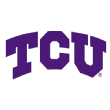 20. TCU Horned Frogs
20. TCU Horned Frogs
Previous FPR positions: 21 for offense, 22 for defense, not ranked for quarterback
Scouting the Horned Frogs: It might not happen right away, but TCU should soon return to the Big 12's lead pack after an unusually mediocre season in 2016. The Frogs need better luck with health, especially on defense, to maintain the standard set by coach Gary Patterson. The real excitement comes at quarterback, not so much with Kenny Hill in 2017 but with incoming freshman Shawn Robinson and 2018 commit Justin Rogers, the No. 4 dual-threat quarterback in the class. "They've got a great get in Shawn," a Big 12 coach said. Trevone Boykin in 2014 showed just how dangerous a Patterson-coached team can be with a playmaker at quarterback. "They've got two guys [Robinson and Rogers] who could potentially be that type of player," a Big 12 offensive assistant said. A Power 5 coach added: "Quarterback-wise they've done an unbelievable job. Robinson has an unbelievable arm. That guy can be special. The big thing is how well they protect him. Can they get the elite linemen?" Underrated running back Kyle Hicks has two more years of eligibility left, and TCU's outlook at receiver, both short term and long term, is good. If healthy, the Frogs' defense should be better this year, especially with the linebackers and safeties returning. But the Big 12 is about scoring points, and if the quarterbacks after Hill pan out, TCU should be a team to watch.
Previous FPR positions: 12 for offense, not ranked for defense, 8 for quarterback
Scouting the Cardinals: Louisville's poor finish in 2016 had less to do with Lamar Jackson's Heisman Trophy worthiness and more to do with issues that must be fixed heading into the evaluation period. Chief among them is an offensive line that broke down far too often. Bobby Petrino brought back his former offensive coordinator Mike Summers to oversee a young line needing leadership at center and other positions. Jackson is back for at least one more season and possibly two, which would dramatically impact Louisville's forecast. The Cardinals should be able to reload at wide receiver, and Petrino wants to feature former quarterback Reggie Bonnafon in several roles. The defense went through a coordinator change and needs a veteran secondary to tighten up against the pass for Peter Sirmon. Louisville doesn't make much of a splash in recruiting, but as a veteran Power 5 coach noted, "They can take anybody. They take the guys that Alabama, Ohio State, people like that want, but for some reason say, 'We're not going to do that.' [Petrino] can manage them. And he may be the best playcaller in America. So they're always going to win."
 22. Oregon Ducks
22. Oregon Ducks
Previous FPR positions: 14 for offense, not ranked for defense, 13 for quarterback
Scouting the Ducks: Opinions vary on how Willie Taggart will fare early in his Oregon tenure. He's an outsider at a historically insular program, and some of his philosophical changes could lead to more turbulence before things stabilize. Then again, Taggart has diverse experience and could re-energize Oregon both on the field and the recruiting trail. "Mario Cristobal, Taggart and the staff, they're going to find great players," a Pac-12 coordinator said. "They're really good recruiters." The same coach added that Mark Helfrich left Taggart enough talent, and that Helfrich's downfall came from using so many young players in 2016, thinking he would be around to see them develop. Some of those players, like outside linebacker Troy Dye and safety Brenden Schooler, occupy key spots for a defense now overseen by master rebuilder Jim Leavitt. If Leavitt replicates what he did at Colorado with the Ducks, Oregon will push Washington and Stanford in the Pac-12 North. Even moderate improvement on defense could lead to a solid first season, as Oregon returns quarterback Justin Herbert, just a sophomore, along with running back Royce Freeman, wide receivers Darren Carrington and Charles Nelson, and a suddenly experienced line. Some correctly note Herbert isn't like Taggart's previous quarterback, Quinton Flowers, but Taggart also hasn't always run the offense he did at South Florida. A coach who faced Taggart at Western Kentucky thinks Taggart will adapt to the quarterback he has. "He's a good, solid football player," a Pac-12 coach said of Herbert. "He's not a kid who could come out early, so I think they're going to be stable there."
 23. Utah Utes
23. Utah Utes
Previous FPR positions: Not ranked for offense, 19 for defense, not ranked for quarterback
Scouting the Utes: There are teams in these rankings that could have dramatic swings, depending on one or two factors. Then there's Utah, sturdy as steel under Kyle Whittingham, who has guided the Utes to 28 wins the past three seasons and eight or more wins in nine of the past 11 seasons. Utah has gaps to fill after producing a record eight NFL draft picks this spring, but Whittingham's track record of reloading, especially along both lines, is impossible to ignore. The Utes will continue to beat up the competition at the line and on special teams. Now, imagine if they had a difference-maker at quarterback. The position has held back Utah at times under Whittingham, whose constant coordinator shuffling hasn't helped, either. But new coordinator Troy Taylor, who mentored Washington's Jake Browning from fifth grade through high school, could provide a big boost to the passing game. "They'll never get enough overall talent to beat Stanford and Washington and USC, but they'll always be capable," a Pac-12 secondary coach said. "It's going to take some type of dynamic quarterback to make that change. Their quarterbacks have been very, very average. When they get a guy that can step up, and then they have that great defense, they can end up winning a conference championship." That quarterback could be Jack Tuttle, a 2018 commit with offers from Alabama and others. "The difference will be if [Tuttle] goes there or not," a Pac-12 coordinator said. "If he does, the future will be really bright."
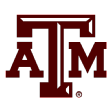 24. Texas A&M Aggies
24. Texas A&M Aggies
Previous FPR positions: 17 for offense, not ranked for defense, not ranked for quarterback
Scouting the Aggies: Texas A&M nearly didn't make the rundown, which is unsettling given how well Kevin Sumlin has recruited. If all those four- and five-star prospects don't translate into more than eight wins -- and more victories during the SEC stretch run -- Sumlin may not be back in 2018. "Vibrant athleticism, crazy freak players," an opposing coach said, "but I don't see a cohesion there." It's not completely dire in College Station, especially on offense, where wide receiver Christian Kirk and running back Trayveon Williams lead a good group of skill players with multiple seasons of eligibility left. "They've got so much young talent, it's unbelievable," a Power 5 coach said. If the offensive line returns to 2012-14 levels, a talented young quarterback (Nick Starkel or Kellen Mond) will have the resources to develop and guide A&M through the evaluation period. "Their receiving corps might be the best [in the SEC]," said a defensive coordinator who faces Texas A&M this season. "[Offensive coordinator Noel Mazzone] understands how to attack people. He might be their best offensive asset." Texas A&M's bigger concern is a defense yet to take off under one of the nation's best coordinators in John Chavis. After losing the transcendent Myles Garrett and fellow end Daeshon Hall, the Aggies will lean on their defensive tackles and safeties in the short term. If Texas A&M shores up its run defense, it could rise again in the competitive SEC West.
Previous FPR positions: Not ranked for offense, 23 for defense, not ranked for quarterback
Scouting the Vols: The orange T on the Vols' helmets hasn't exactly stood for trustworthy, especially after a 2016 season where they couldn't win an SEC East division there for the taking. Tennessee nearly didn't make these rankings, but the talent Butch Jones has accumulated is too significant to ignore. And as a program insider recently noted, Jones' teams may benefit from being just outside the spotlight. After an injury-ravaged season in 2016, the Vols' defense could take a step forward this fall, especially if Jonathan Kongbo blossoms alongside Kendal Vickers up front. Linebacker Darrin Kirkland Jr. has two years of eligibility left and provides leadership for the unit. There are pressing concerns with the offense, which had been so centered on quarterback Josh Dobbs and running backs Jalen Hurd and Alvin Kamara, who all depart. The coaching changes on that side will help, and Tennessee has recruited well enough to reload at the skill spots and build up its offensive line. The key is getting some production from the next quarterback, Quinten Dormady or Jarrett Guarantano, as the surrounding pieces should be good. "They've got some receivers coming back," said a defensive coordinator who faces Tennessee this season. "They're not going to be hurting for athleticism."

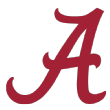 1.
1. 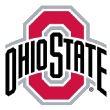 2.
2. 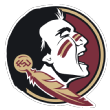 3.
3.  4.
4. 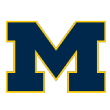 6.
6.  7.
7.  9.
9.  10.
10. 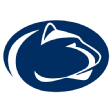 11.
11. 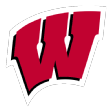 12.
12. 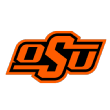 13.
13. 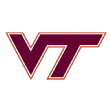 19.
19. 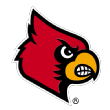 21.
21.  25.
25.